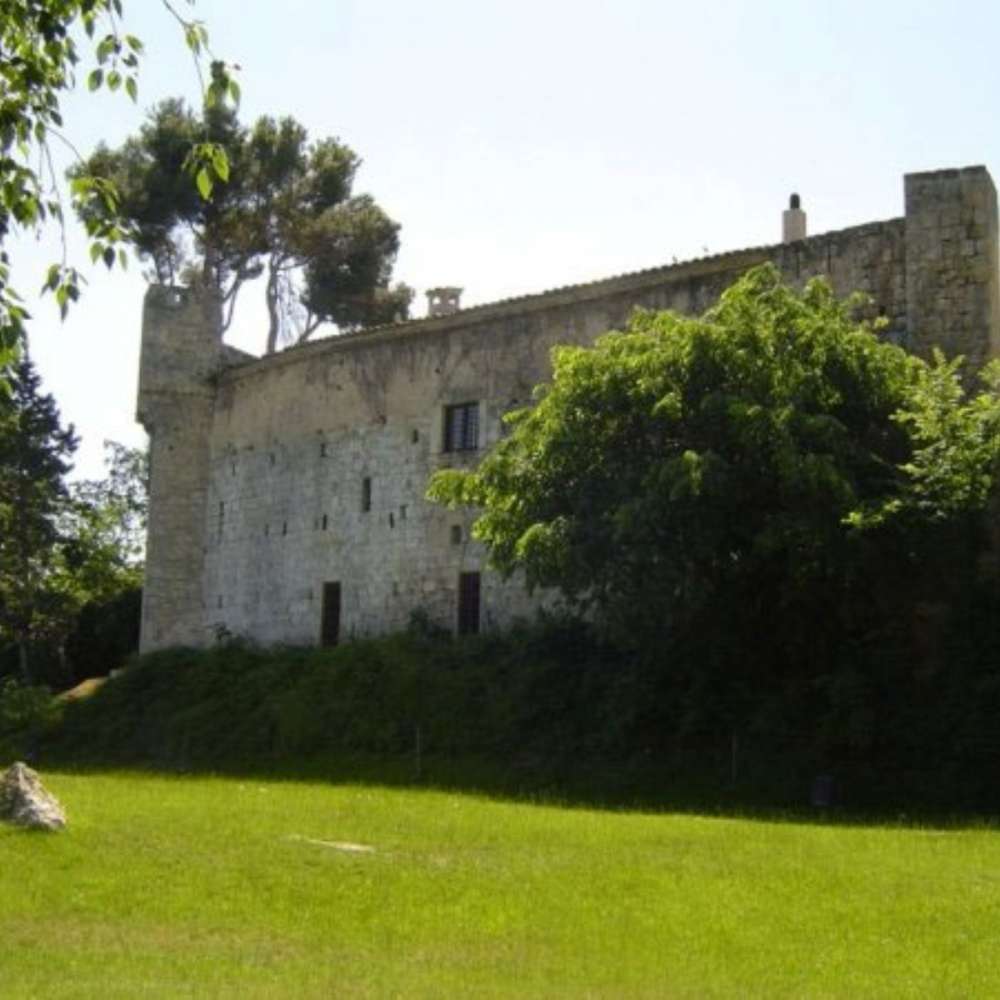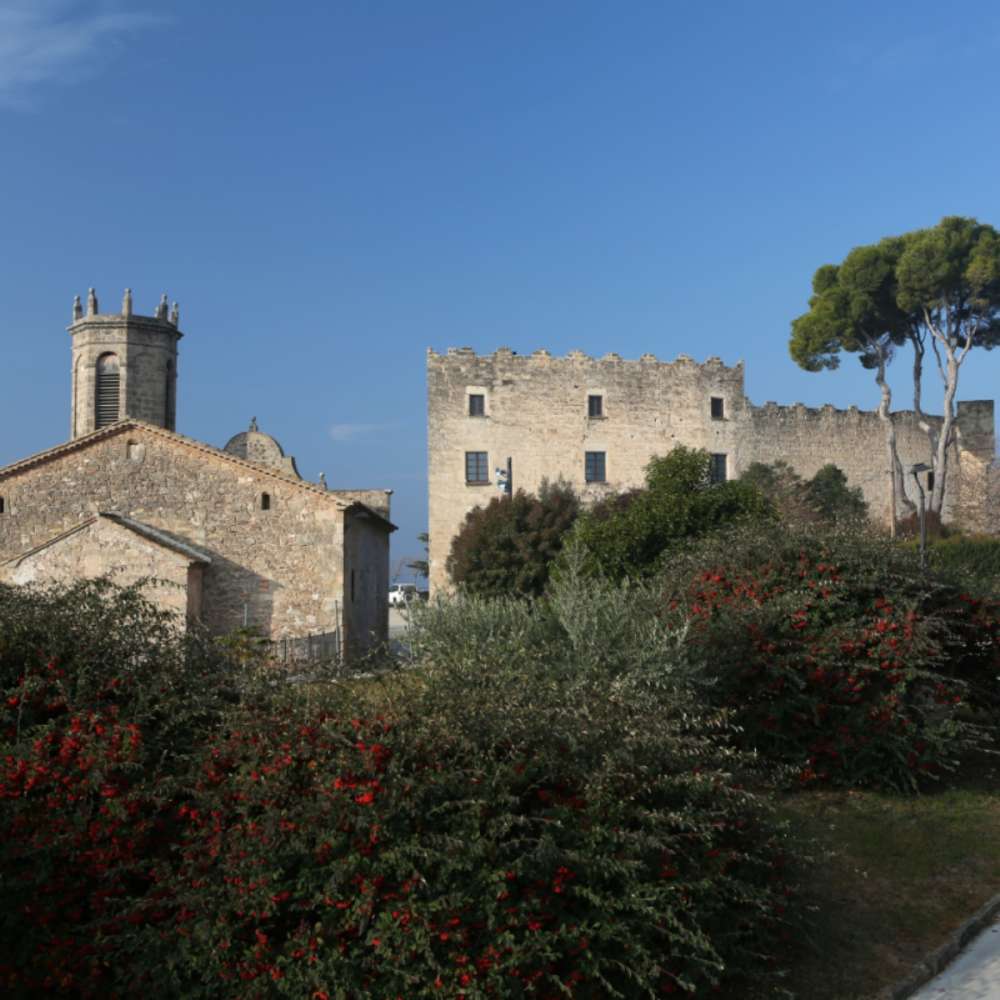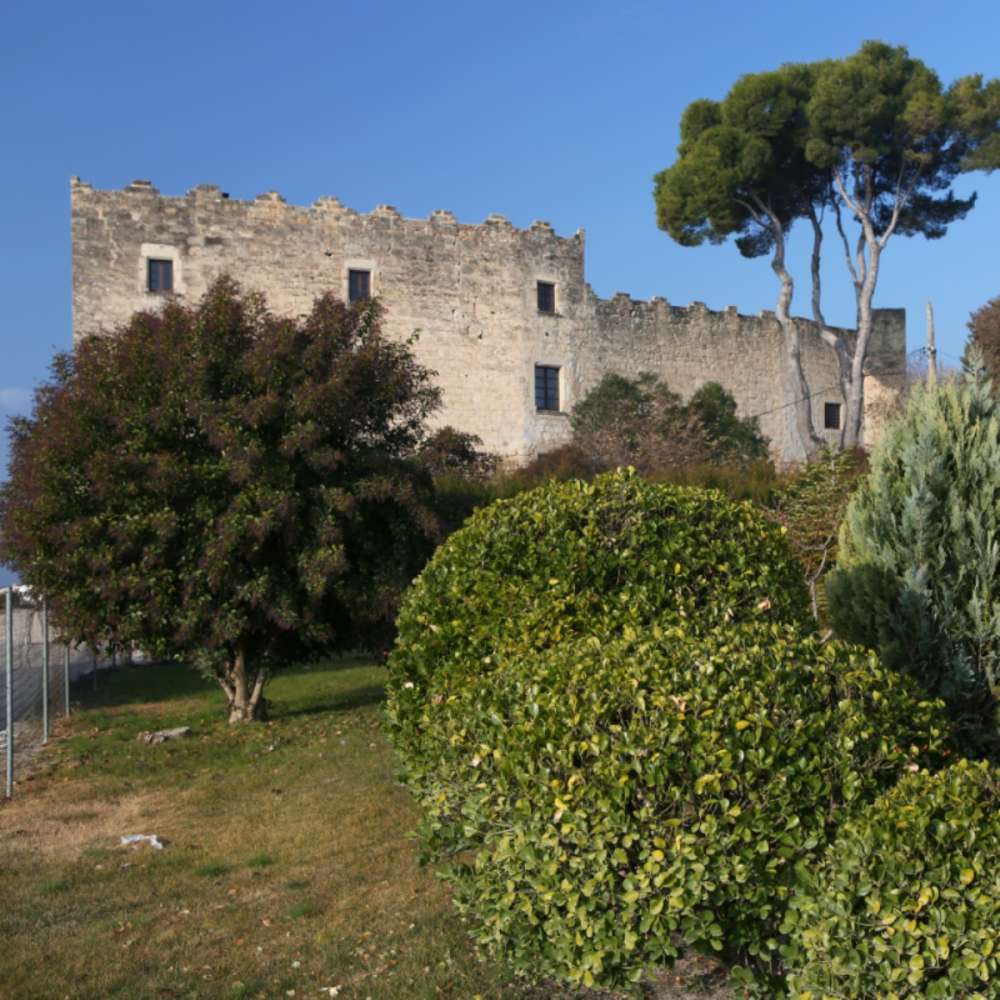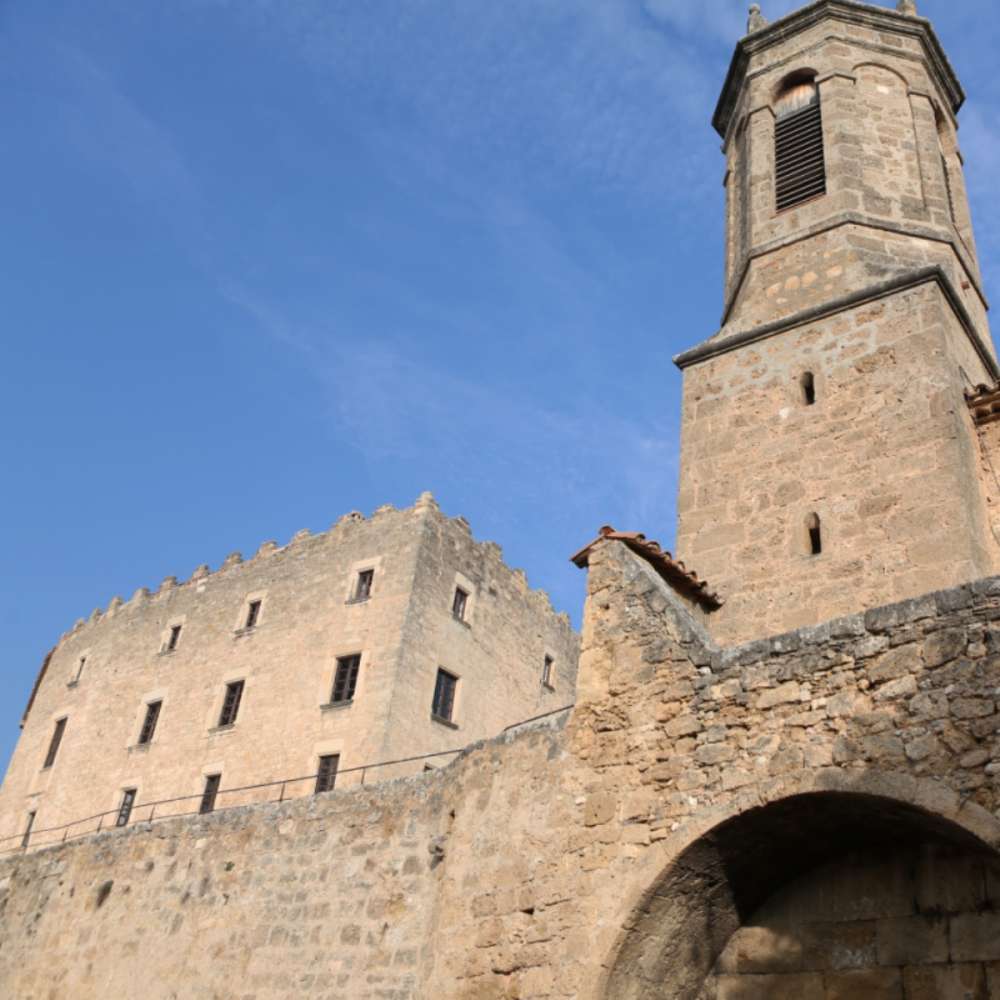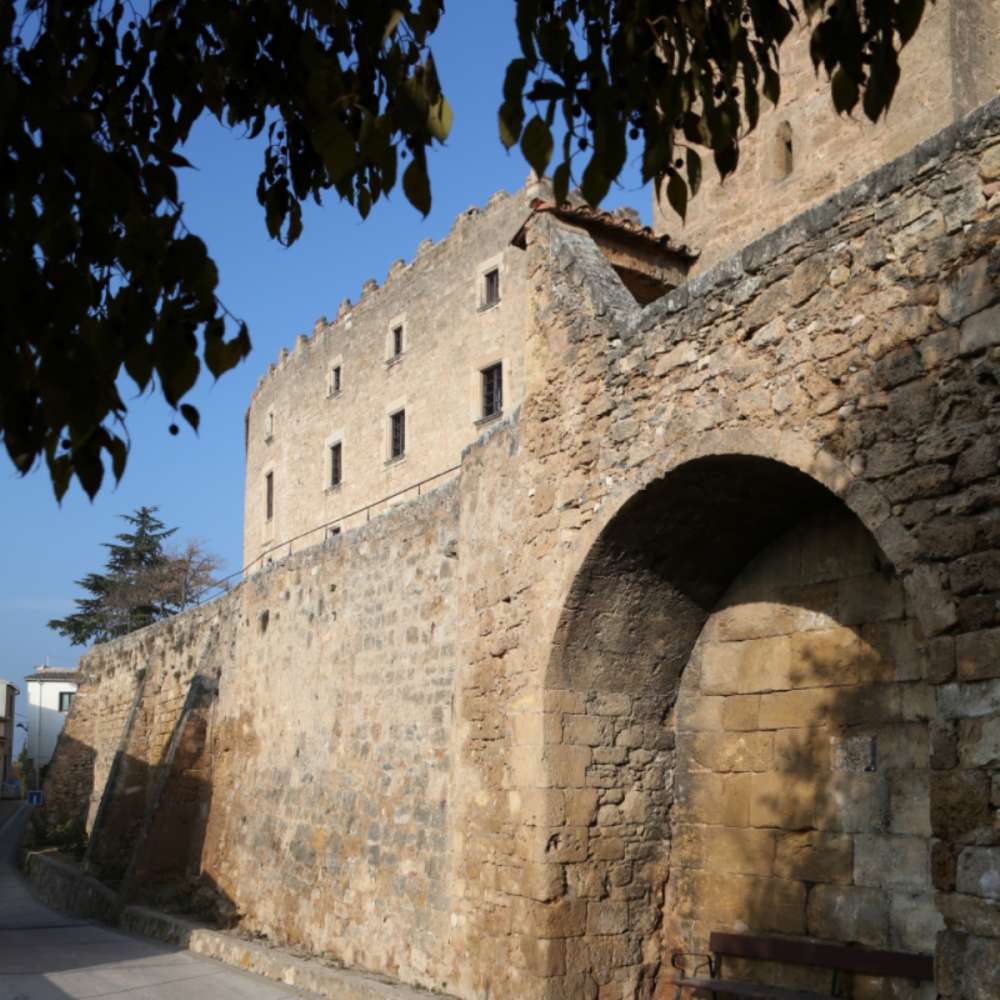Castle of the Tower of Claramunt
At the end of the 11th century, a tower was built at the top of a hill located on the edge of the municipal district of Claramunt. This spot offered a commanding view of the Carme valley and dry river bed, and of the road leading towards the Penedès area. Over time, the original tower was extended and the town gradually grew around the hill.
The castle of the Tower of Claramunt has a hexagonal floor plan and comprises a ground floor and three upper storeys. The site is structured around three courtyards. This highly complex layout reflects the successive renovations and extensions executed at different times. The oldest part of the site is the north façade, which includes a quadrangular tower attached to the north-east corner. In the 14th and 15th centuries the complex was extended southwards. Finally, in the 16th century, it was extended once again eastwards and southwards with the construction of the Renaissance-style façades, which are the ones that remain most visible today. A section of the moat that must have surrounded the entire castle has been preserved along the east façade. The church of Sant Joan Baptista has also been preserved. Originally built in the Romanesque style, it would have formed part of the original castle site.
From the time of its construction, the Tower was under the control of the lords of Claramunt, who lived in Claramunt Castle. However, in 1318, the Claramunt family transferred its rights over this castle to the Cardona family and moved to the Tower of Claramunt. In 1318 it also transferred its rights over the Tower of Claramunt to the Cardona family but remained there as its castellans. Nevertheless, in the 16th century, the Cardona family returned the jurisdictional rights to the Claramunt family. The descendants of the Claramunt family still own and live in the castle.
During the War of the Spanish Succession, Josep Antoni de Ribera d’Espuny i Claramunt, lord of the Tower of Claramunt, sided with the Austrian Empire. Following its defeat in 1714 he was banished to Burgos and dispossessed of his title. The castle was even set on fire in 1722. His titles and income rights were returned to him in 1725 but his heirs are still seeking recognition by the Crown of the title of marquis granted to him by Archduke Charles of Austria.
www.latorredeclaramunt.cat

I RODALIES

